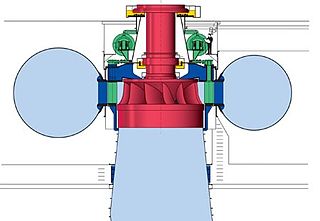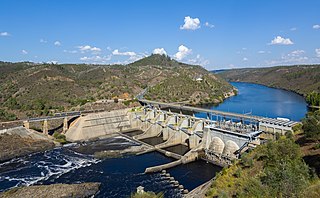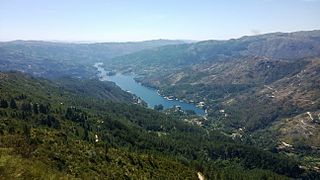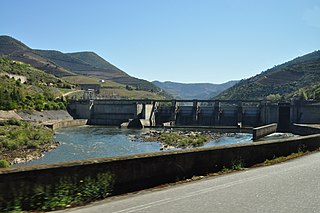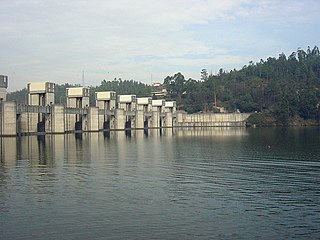| Aguieira Dam | |
|---|---|
 | |
| Official name | Barragem da Aguieira |
| Location | municipality Mortagua, Viseu District, Portugal |
| Coordinates | 40°20′24.7″N8°11′49.2″W / 40.340194°N 8.197000°W Coordinates: 40°20′24.7″N8°11′49.2″W / 40.340194°N 8.197000°W |
| Status | Operational |
| Construction began | 1972 |
| Opening date | 1981 |
| Owner(s) | Companhia Portuguesa de Produção de Electricidade |
| Dam and spillways | |
| Type of dam | Concrete multiple arch dam |
| Impounds | Mondego River |
| Height (foundation) | 89 m (292 ft) |
| Length | 400 m (1,300 ft) |
| Elevation at crest | 125 m (410 ft) |
| Dam volume | 365,000 m3 (12,900,000 cu ft) |
| Spillway type | On the dam body |
| Spillway capacity | 2,080 m³ |
| Reservoir | |
| Total capacity | 423,000,000 m3 (343,000 acre⋅ft) |
| Active capacity | 304,000,000 m3 (246,000 acre⋅ft) |
| Surface area | 20 km2 (7.7 sq mi) |
| Normal elevation | 117 m (384 ft) |
| Operator(s) | Energias de Portugal |
| Commission date | 1981 |
| Type | Pumped-storage |
| Hydraulic head | 71.6 m (235 ft) (max) |
| Turbines | 3 x 112.4 MW Francis-type |
| Installed capacity | 336 MW |
| Annual generation | 209.9 GWh |
Aguieira Dam (Portuguese: Barragem da Aguieira) also known as Foz do Dão Dam (Portuguese: Barragem da Foz do Dão) is a concrete multiple arch dam on the Mondego River, where the river forms the border line between the districts of Coimbra and Viseu. It is located in the municipality Penacova, in Coimbra District, Portugal.

Concrete, usually Portland cement concrete, is a composite material composed of fine and coarse aggregate bonded together with a fluid cement that hardens over time—most frequently a lime-based cement binder, such as Portland cement, but sometimes with other hydraulic cements, such as a calcium aluminate cement. It is distinguished from other, non-cementitious types of concrete all binding some form of aggregate together, including asphalt concrete with a bitumen binder, which is frequently used for road surfaces, and polymer concretes that use polymers as a binder.

An arch dam is a concrete dam that is curved upstream in plan. The arch dam is designed so that the force of the water against it, known as hydrostatic pressure, presses against the arch, compressing and strengthening the structure as it pushes into its foundation or abutments. An arch dam is most suitable for narrow canyons or gorges with steep walls of stable rock to support the structure and stresses. Since they are thinner than any other dam type, they require much less construction material, making them economical and practical in remote areas.

The Rio Mondego is the longest river located exclusively in Portuguese territory. It has its source in Serra da Estrela, the highest mountain range in mainland Portugal. It runs 234 kilometres (145 mi) from the Gouveia municipality, at 1,425 metres (4,675 ft) above sea level in Serra da Estrela, to its mouth in the Atlantic Ocean next to the city of Figueira da Foz.
Contents
Construction of the dam began in 1972. The dam was completed in 1981. It is owned by Companhia Portuguesa de Produção de Electricidade (CPPE). Besides power production the dam is also used for flood control, water supply and irrigation. [1]







